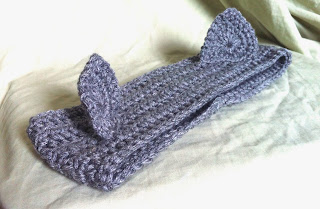Hey, awesome you!
This post is two-fold. There is a review of the joining technique used, as well as the pattern for the filler grannies that I created.
I have never in my life made an afghan in which joining was required, but when I saw these cute little guys wandering around on Pinterest, I just thought they were so adorable, that an afghan HAD to be made with them!!
The pattern for these adorkable little darlings can be found on a blog called "Repeat Crafter Me." Please click on the image above to go directly to the pattern!
There was no getting around it. I was enchanted. An owlghan. How cute, am I right? Now that I'm closer to being done with the afghan . . . well, I'm just honestly not sure that I'll ever make another afghan in which joining is required again! Don't get me wrong, it's certainly not the joining that was a pain in the neck. Honestly, it's getting the edging right, but I'll focus on that in another post later this week.
So, the first thing I did was pick out the colors I wanted to use. This afghan is for my 4-year-old daughter, so pink and purple just had to be in the mix. I'm in love with everything sage right now, so I threw some of that in there to add some contrast. The colors together remind me of a fairy tale.
Confession time! I did not make a graph for how many squares I would make before I started making them. Don't judge me! I had a valid reason for not doing that. There's a madness to my methods.
I wanted to see how quickly and easily I could put the owls together. I'm a fast crocheter, and I'm not all that patient. So, sewing on buttons and making beaks and feet on top of the normal crocheting? Eh. Making a ton of owls did not seem like my thing. I don't mind the little nuances of adding and decreasing stitches, sewing parts together, and sewing embellishments on so much when I'm making a stuffed animal, because they're normally pretty easy and quick to make, but a ton of monotonous little owls? What was I getting myself into?
Luckily, the pattern for the owls really is fairly quick and easy. Naturally, as well, I cheated a little bit and used a larger hook size than the pattern calls for. I still didn't want to make that many owls, though, so I made up a filler square to go in between them based on the center of the owls for continuity. The pattern is so incredibly simple. It goes like this:
OWLGHAN FILLER GRANNY
Make a magic circle.
ch 1
Rnd 1: 8 hdc in magic circle, pull string taught, sl st to join (8 st)
Rnd 2: ch 1 (do NOT turn), 2 hdc in ea. st around, sl st to join, finish off 1st color (16 st)
Rnd 3: with 2nd color, sl st to join, *ch 3, sk next st, sc in following st, repeat from * 6 more times, ch 3, sl st in same st as join (8 ch 3 spaces)
Rnd 4: ch 3 (counts as first dc now and throughout), 2 dc in same sp, ch 2, 3 dc in same sp, *ch 1, 3 dc in next sp, ch 1, 3 dc in next sp, ch 1, 3 dc in same sp, repeat from * 2 more times, ch 1, 3 dc in next sp, ch 1, sl st to join, fasten off 2nd color (4 corners, 4 sides, 36 st)
Rnd 5: with 3rd color, sl st in corner to join, ch 3, 2 dc in same sp, ch 2, 3 dc in same sp, *ch 1, 3 dc in next sp, ch 1, 3 dc in next sp, ch 1, 3 dc in next sp, ch 1, 3 dc in next sp, ch 2, 3 dc in same sp, repeat from * 2 more times, ch 1, 3 dc in next sp, ch 1, 3 dc in next sp, sl st to join, fasten off (48 st)
Rnd 6: with 4th color, sl st in corner to join, ch 3, 2 dc in same sp, ch 2, 3 dc in same sp, *ch 1, 3 dc in next sp, ch 1, 3 dc in next sp, ch 1, 3 dc in next sp, ch 1, 3 dc in next sp, ch 1, 3 dc in next sp, ch 2, 3 dc in same sp, repeat from * 2 more times, ch 1, 3 dc in next sp, ch 1, 3 dc in next sp, ch 1, 3 dc in next sp, sl st to join, fasten off.
After I got going on the squares, I jotted down a graph on the back of a random piece of paper I had lying around the house. When I got all of the squares done, I slip stitched in each stitch along all the columns first to join, and then along each of the rows. I like the slip stitches being on the front so they're more visible. Owls are very good hiders, and they like to hang out in trees. These should reflect that somehow. To me, it looks like they're perched on the white joining, or even peeking out of a hole in a tree. This is what it looks like pre-border:
As always, I hope that you find this post helpful! If you have any questions or concerns, please comment below. Happy stitching! xo



















































